Cooling a hot horse
| May 5, 2019 | Posted by Melinda under Uncategorized |
Here’s a highly simplified and barely scientific explanation of why it’s important to cool a hot horse during a vet check at an endurance ride.
It boils down to this simple concept:
Blood has lots of jobs to do in the horse’s body. Once your horse is standing in the vet check, the blood has two choice – cool the body by going to the skin and releasing heat, or go to the GI system and absorb water, calories and electrolytes. There’s only so much blood to go around, so if it’s busy cooling your horse down, it won’t be helping the digestion system move around and do its thing. You gotta help your horse cool so the blood can prioritize the digestion system!

Under normal circumstances, some blood is helping the horse regulate body temperature, and some of it is giving the digestive system some love.
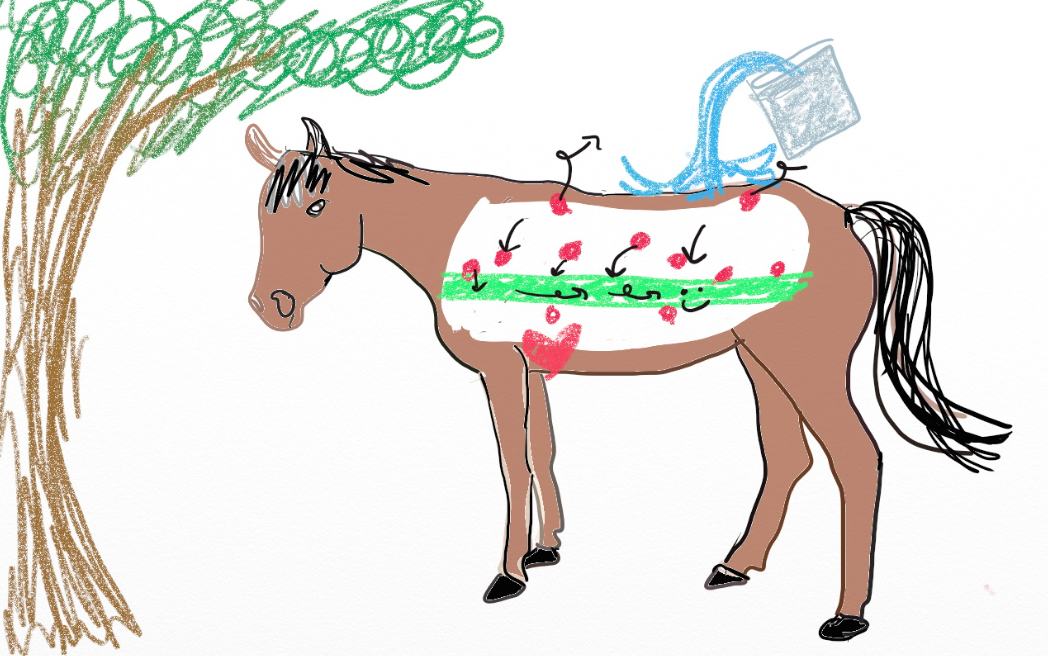
When you help cool the horse, you help reassign blood back to the GI tract so your horse can kick ass on the next loop.
Now let’s review the other over-simplified concept that is terribly important to remember:
Horses get dehydrated over 50 mile rides. The amount of fluid in the their body decreases. What is made up of a LOT of water? Blood. Thus, the volume of blood in a horse’s body decreases. Now less blood/body water available, but the demands of cooling the body and making the GI tract happy are even greater – making it even MORE critical that you help your horse out by actively cooling them, so that they can get on with the business of EDPP (Eating, Drinking, Peeing, Pooping).
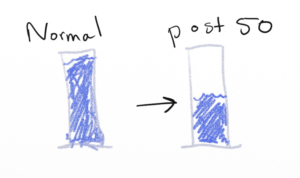
Horses dehydrate (lose body water) – over 50 miles. This is a fact, even if they are drinking well during the ride.

Under normal circumstances the blood does the dual job of cooling and supporting the digestive tract. However, it’s important to note that the demands of cooling/sweating take priority over the GI tract if the action heats up.

Endurance rides aren’t normal circumstances!!!!! With even less water/blood to go around than normal, the GI tract gets ignored even more in favor of cooling and sweating.

When you give your horse a hand (or a bucket), you are making a difference!! Remember, if the GI tract isn’t working, it’s more than just poor scores in the vet check. Water, food, and elytes sitting in the GI tract can’t go anywhere until the blood can distribute it throughout the body.

PS. Edit. It’s amazing to me how many emails/comments/messages I’m getting that are telling me to redraw the frame with water being poured over the horse’s back. Enough that I feel like I have to say something to justify why I drew it that way beyond just it being a more clear image to show water coming from the top instead of being splashed below on the belly.
IT’S OK TO PUT WATER ON YOUR HORSE’S BACK. Do you want to take a really hot horse on a hot day that still has it’s tack on and dump ice water on it’s butt? No. So, sponge down it’s belly and neck and shoulders while you are untacking. At that point the horse should be cool enough that pouring water across it’s back etc should be fine and will continue to cool the horse more efficiently than continuing to only place water on the belly. Feet/legs/belly may be sufficient for a horse that is doing pretty well in the heat, but for a horse that is really struggling, is still hot to the touch in the vet line, with an increased respiration and quiet gut sounds, GET SOME WATER ON THE HORSE. It’s amazing what can happen after 5 minutes of dedicated cooling and LOTS of water being poured over the horse.
It’s important to remember that horse’s are individuals. Some horses may be more sensitive to water on their rump etc and getting crampy. My retired 100 mile mare (Farley) tends to be like this. Based on lots of miles together I know to avoid a 2 foot square portion of her rump.
I talk about buckets of water, but actively sponging works too – and you can avoid the rump and problem areas for your horse.
So, like everything else in endurance, where you specifically choose to put water on your horse is an individual choice without a black and white rule. However, if you have a really hot horse this isn’t wrong: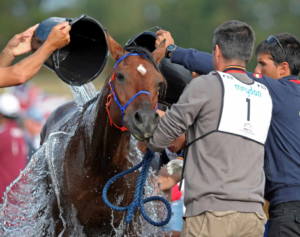
….and it makes a helluva difference in how they look metabolically.
Is there a risk of cramping? Maybe. Cool smart. Is there a risk that your horse will not be able to dissipate heat well and poor gut motility leading to metabolic problems? Sure. Cool smart. There’s a risk and a benefit for almost every decision you make in endurance and part of the game is balancing those risks for you and your horse and getting to the finish line looking as good as you can.



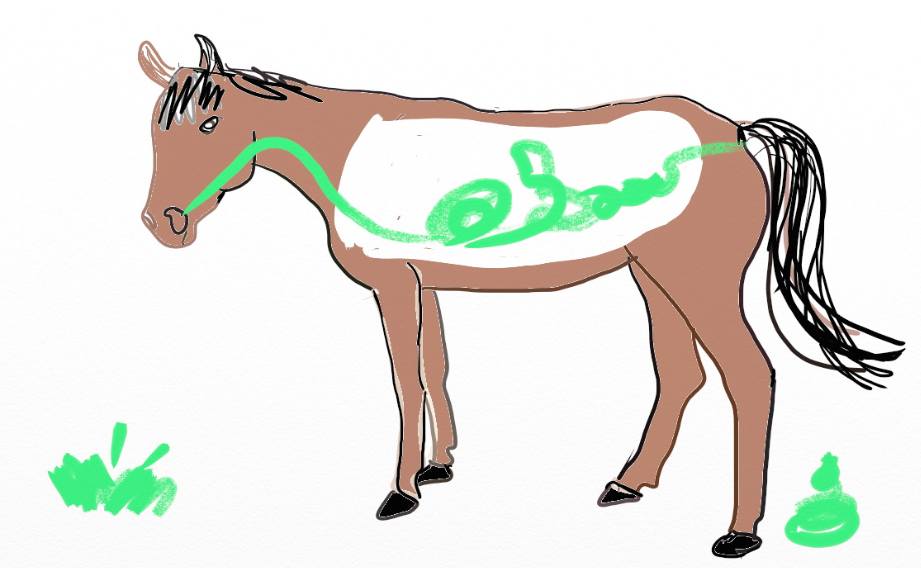
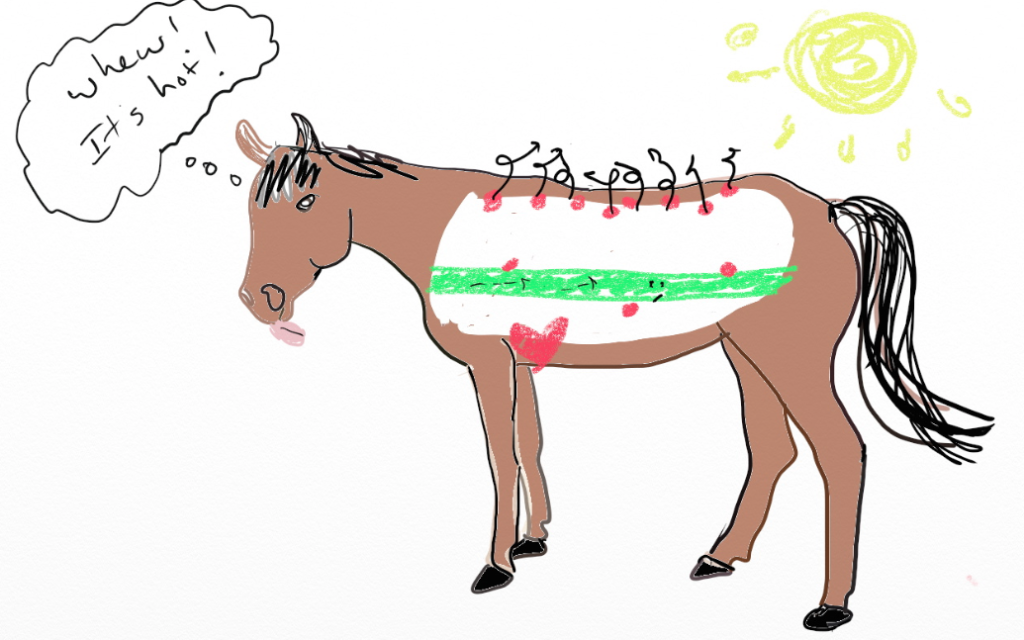

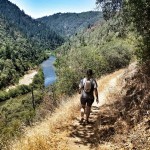







Which electrolytes do you recommend giving?
I don’t have a specific recommendation. Get one that is formulated for endurance horses and then experiment with it on your particular horse. The variation of individual response to electrolytes is so varied it’s hard to give a blanket recommendation. One of my horses was a heavy electrolyte “need-er.” The rest of mine have gotten by on none or very little. I haven’t seen much difference between commercial ones and homemade. The most important thing is to have a plan and practice it before the ride, don’t make the horse hard to handle around the mouth because of how and when you give them, and consider the impact of their timing with eating at checks.
OMG you brilliant woman. I get it. It totally get it.
:).
Love this. I’ve watched many methods of cooling. This is excellent for educating new and experienced riders. And add to it the idea confirming continuing cooling with the need of the individual horse in mind. The drawings are classic too. I have saved this to share in my horse groups.
Thanks, great information!
Joyce Sousa
Thank you so much for educating us so we can take better care of our partners ?
I love it!!
Thank you so much!
Thank you so much!! Very easy to read and understand!!
Excellent explanation and LOVE The illustrations!
Just thought of something else. One reason I’m putting this post up is because it seems like a lot of riders cool u til the horses heart rate drops to criteria. Then they stop. Mission accomplished. My hope is that if people understand what else happens when you cool, they will keep going and help their horse recover better. I can tell the differwnxe in the vet line of horses that have been cooled to recovery (ie heart rate) and those who have been cooled past that with attention to cooling until the horse was no longer hot.
Some scientific reports are mow saying there is no need to scrape the water off, just continue adding more cold water, maybe start to lightly scrape as the horse is cooling down. We feed a wet mash like Speedi beet at the end after the horse has cooled down, often the horse will eat this when it won’t drink, in really hot weather we put electrolytes into the mash.
So, I actually agree with that – that there is no need to scrape as long as you CONTINUE to put additional cold water on them. For example, not scraping and continuing to run a hose or lots of bucket water is how I will cool at home, or where there is plenty of water. HOWEVER. The reason that I still choose to tell people to scrape is because water is scarce at vet checks in my area and it’s usually impossible to just continuously run over off a horse. Often times we have to cool our horse, knowing that others will be coming behind us needing to cool their horses too.
So, at the majority of endurance rides, wetting and scraping is more practical than a running hose or a bucket brigade.
I should clarify that the comments about water being put on the back of the horse were all social media, not here. 🙂
Dr. Mel, do you have any preference about scraping off water vs. not scraping off water (in the cooling process)?
You absolutely have to scrape the water off, otherwise the water insulates the hair coat, making the horse hotter. Dump and scrape, dump and scrape, and repeat! I like to continue to put water on until the water I scrape off is cool and not instantly warmed up by the horses skin.
Thank You, i enjoyed reading this, it helps to understand it all.
i could tell that was a horse…. Thanks for the explanation, I’ve been guilty of not using enough water to cool my horse even tho I only do 25s.
Brilliant, thanks. But what does EDPP stand for please?
Eating, Drinking, Peeing, Pooping!!!!!!
Doh! Thanks ?
Thank you Dr. Mel. Comet and I appreciate the explanation.